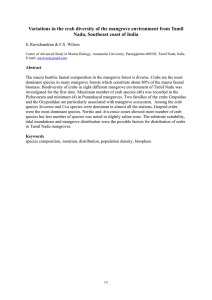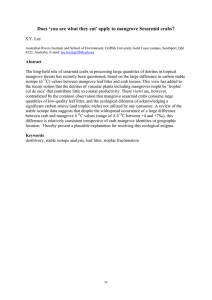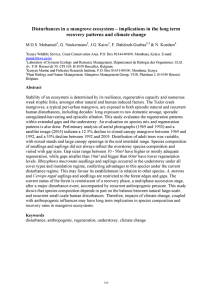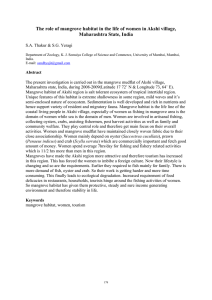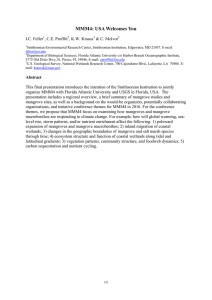Sesarmops intermedius in mangrove ecosystem of Kerala, India
advertisement
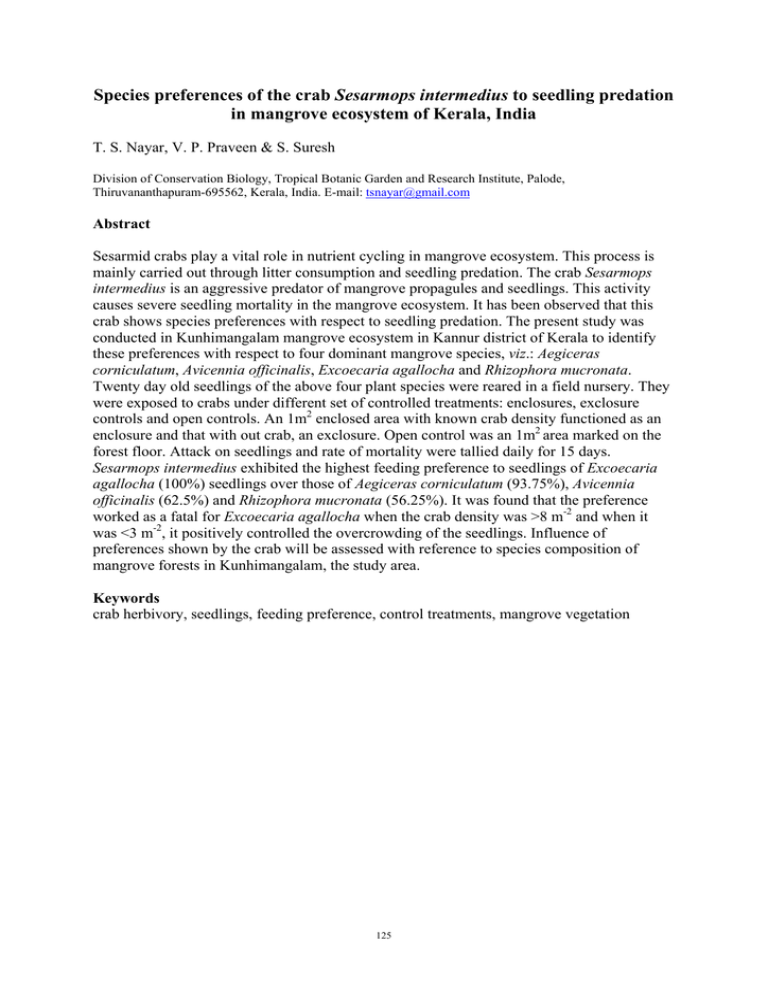
Species preferences of the crab Sesarmops intermedius to seedling predation in mangrove ecosystem of Kerala, India T. S. Nayar, V. P. Praveen & S. Suresh Division of Conservation Biology, Tropical Botanic Garden and Research Institute, Palode, Thiruvananthapuram-695562, Kerala, India. E-mail: tsnayar@gmail.com Abstract Sesarmid crabs play a vital role in nutrient cycling in mangrove ecosystem. This process is mainly carried out through litter consumption and seedling predation. The crab Sesarmops intermedius is an aggressive predator of mangrove propagules and seedlings. This activity causes severe seedling mortality in the mangrove ecosystem. It has been observed that this crab shows species preferences with respect to seedling predation. The present study was conducted in Kunhimangalam mangrove ecosystem in Kannur district of Kerala to identify these preferences with respect to four dominant mangrove species, viz.: Aegiceras corniculatum, Avicennia officinalis, Excoecaria agallocha and Rhizophora mucronata. Twenty day old seedlings of the above four plant species were reared in a field nursery. They were exposed to crabs under different set of controlled treatments: enclosures, exclosure controls and open controls. An 1m2 enclosed area with known crab density functioned as an enclosure and that with out crab, an exclosure. Open control was an 1m2 area marked on the forest floor. Attack on seedlings and rate of mortality were tallied daily for 15 days. Sesarmops intermedius exhibited the highest feeding preference to seedlings of Excoecaria agallocha (100%) seedlings over those of Aegiceras corniculatum (93.75%), Avicennia officinalis (62.5%) and Rhizophora mucronata (56.25%). It was found that the preference worked as a fatal for Excoecaria agallocha when the crab density was >8 m-2 and when it was <3 m-2, it positively controlled the overcrowding of the seedlings. Influence of preferences shown by the crab will be assessed with reference to species composition of mangrove forests in Kunhimangalam, the study area. Keywords crab herbivory, seedlings, feeding preference, control treatments, mangrove vegetation 125

